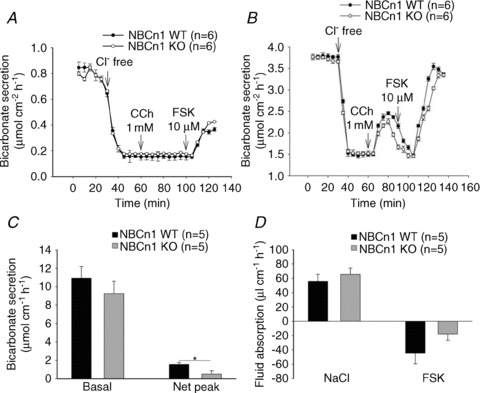Figure 5. Colonic HCO3− secretion and fluid absorption in NBCn1 KO and WT mid-distal colon.

Bicarbonate secretory rates in isolated proximal (A) and mid-distal isolated colonic mucosa (B) in the Ussing chamber. After determination of the basal rate, luminal Cl− was removed to inhibit Cl−–HCO3− exchange and enhance agonist-mediated HCO3− secretion (Vidyasagar et al. 2004). No differences in basal, Cl−-free and agonist-stimulated HCO3− secretary rates were observed between NBCn1 KO and WT colonic mucosa. C, measurement of HCO3− secretory rates in the basal state (left bars) and forskolin (FSK; 10 μm)-induced change in HCO3− secretory rates (right bars) in luminally perfused mid-distal colon in anaesthetized mice. D, measurement of net fluid transport in the same experimental set-up. Net absorptive rates are shown in the basal state, and the right bars indicate the fluid secretory state after luminal FSK application. No difference was seen in basal HCO3− secretory rate or in the fluid absorptive and fluid secretory response to FSK in NBCn1 KO and WT colon, but a slight but significant difference was observed in the HCO3− secretory output after FSK. The numbers of mice are given in parentheses. *P≤ 0.05 between the groups.
